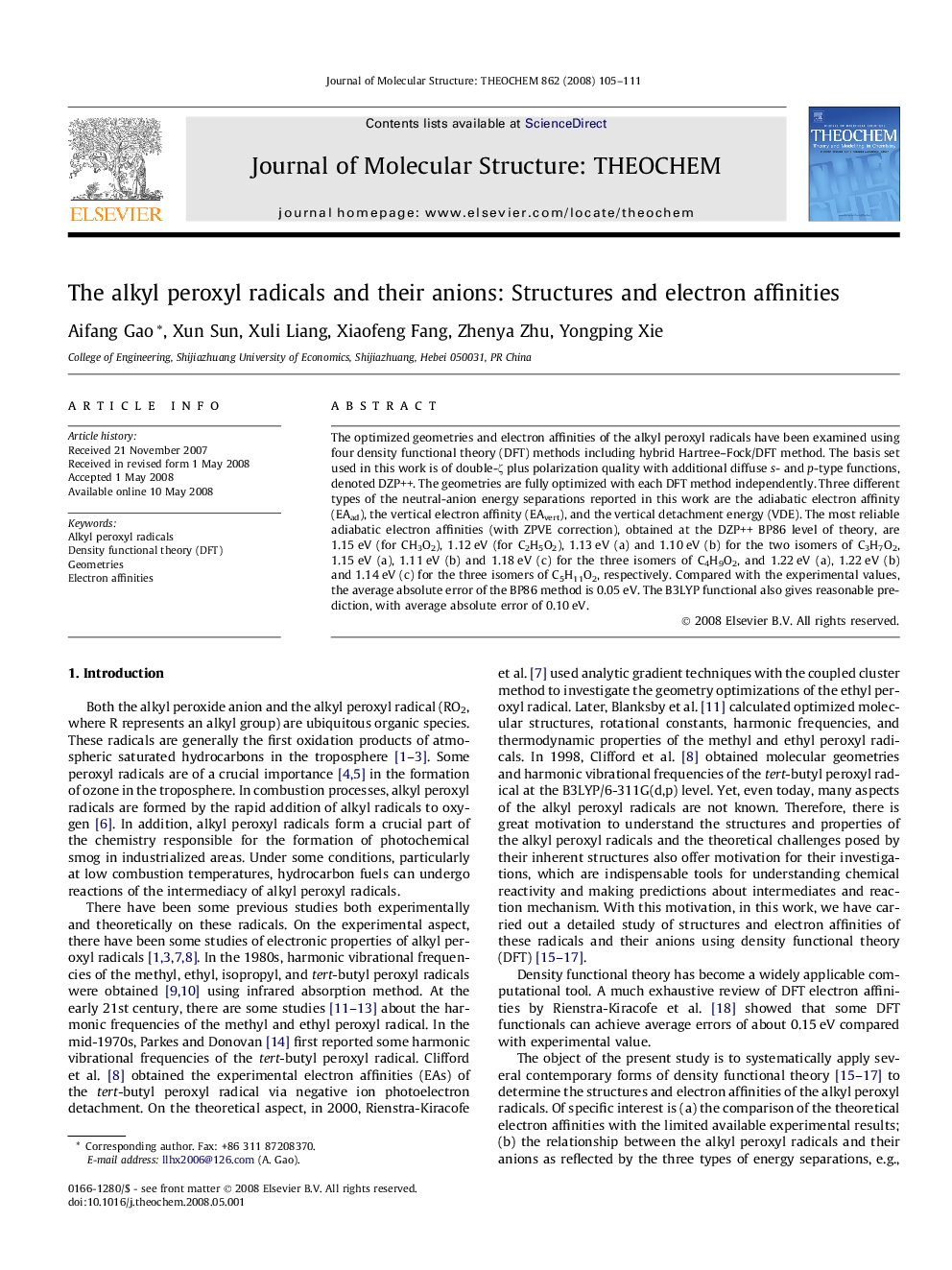| Article ID | Journal | Published Year | Pages | File Type |
|---|---|---|---|---|
| 5417863 | Journal of Molecular Structure: THEOCHEM | 2008 | 7 Pages |
Abstract
The optimized geometries and electron affinities of the alkyl peroxyl radicals have been examined using four density functional theory (DFT) methods including hybrid Hartree-Fock/DFT method. The basis set used in this work is of double-ζ plus polarization quality with additional diffuse s- and p-type functions, denoted DZP++. The geometries are fully optimized with each DFT method independently. Three different types of the neutral-anion energy separations reported in this work are the adiabatic electron affinity (EAad), the vertical electron affinity (EAvert), and the vertical detachment energy (VDE). The most reliable adiabatic electron affinities (with ZPVE correction), obtained at the DZP++ BP86 level of theory, are 1.15 eV (for CH3O2), 1.12 eV (for C2H5O2), 1.13 eV (a) and 1.10 eV (b) for the two isomers of C3H7O2, 1.15 eV (a), 1.11 eV (b) and 1.18 eV (c) for the three isomers of C4H9O2, and 1.22 eV (a), 1.22 eV (b) and 1.14 eV (c) for the three isomers of C5H11O2, respectively. Compared with the experimental values, the average absolute error of the BP86 method is 0.05 eV. The B3LYP functional also gives reasonable prediction, with average absolute error of 0.10 eV.
Related Topics
Physical Sciences and Engineering
Chemistry
Physical and Theoretical Chemistry
Authors
Aifang Gao, Xun Sun, Xuli Liang, Xiaofeng Fang, Zhenya Zhu, Yongping Xie,
